hubris, disconnection, sorrow, a lack of empathy (his for sure, how could he want to kill a beautiful animal like that - but ours as well for our outright condemnation of him).
think on it, I am. give thanks and praise.
|
|
|
here are some thoughts on the killing of Cecil, the Leo - but more importantly, something for us all to consider - what are the secondary consequences (ripple effects) of our actions? and, are any of our actions isolated? hubris, disconnection, sorrow, a lack of empathy (his for sure, how could he want to kill a beautiful animal like that - but ours as well for our outright condemnation of him). think on it, I am. give thanks and praise.
0 Comments
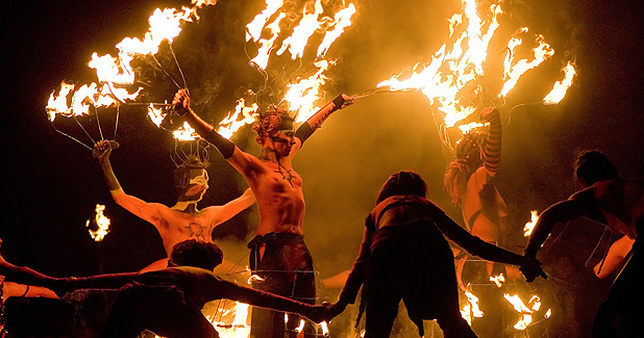 A frolicking grand Beltane to y'all! Or, May Day-After, if that's how you roll... Purify, light a fire and pass yourself before it. Make ritual, create purpose, imbue meaning. I am a Heliotheodactylolatrist (a worshipper of the fingers of the sun - Ole Surya), so I honor the Solar days; not only the Solstices and Equinoxes, but also the 'cross-quarter' days. In the eight-spoked (sound familiar) ring of the Year, there are eight total Solar Observances, many of which we still celebrate in some fashion. May Day is one of these - the halfway point between Vernal Equinox and Summer Solstice. And, the international day of workers! With some help from my friends at the Wiki, here's some background on Beltane, or as I fancy the most simple translation, Bright Fire! And, as you read, give thanks and praise - be optimistic, allow that which has passed to pass, and look towards what you can create, tend, grow, and cultivate. The Old Irish Bel(l)taine is derived from Common Celtic *belo-te(p)niâ, meaning "bright fire" (*belo- might be cognate with the English bale [as in 'bale-fire'] meaning 'white' or 'shining'; compare Anglo-Saxon bael, and Lithuanian/Latvian baltas/balts, found in the name of the Baltics - "Shining"). Think here also how Belarus gets translated as "White Russia"... According to Dáithí Ó hÓgáin the term Céad Shamhain or Cétshamhainin means "first half", which he links to the Gaulish word samonios (which it is thought means "half a year") as in the end of the "first half" of the year that begins at Samhain (what we now call Halloween; originally the beginning of the Celtic year).  Beltane (or Beltaine) is celebrated on 1 May even though in this year's Solar reckoning, it appears closer to the 2nd and 3rd; it’s a springtime festival of optimism. I can always get behind optimism - me and Kevin Costner, in "The Postman" - "things are getting better, things are getting better every day..." But, I digress. Fertility rituals were practiced, in part perhaps connecting with the waxing power of the sun. Historically, huge bonfires would mark this time of purification and transition, heralding in the season in the hope of a good harvest later in the year. In many of the Gaelic traditions, on this day the village's cattle were driven between two bonfires to purify them and bring luck (Eadar dà theine Bhealltainn – 'between two fires of Beltane'). In Scotland, boughs of juniper were sometimes thrown on the fires to add an additional element of purification and blessing to the smoke. People would pass between the two fires to purify themselves. The bonfires were paired with ritual acts to protect the people from any harm from Otherworldly spirits; similar to the festival of Samhain (on 31 October antipodal to Beltane ), Beltane was also a time when the Otherworld was seen as particularly close at hand. Then there’s the whole Maypole, or the decorating of bushes, ashes, hawthorns, and oaks – some of the sacred trees of the Gaelic culture. The decorating of trees, or the hanging of boughs on houses and in public places continued in the Gaelic diaspora and still has remnants occurring around the world. Decorate a tree, light a small fire, bring a bough of something into your home, create space and let the light in - give thanks and praise! 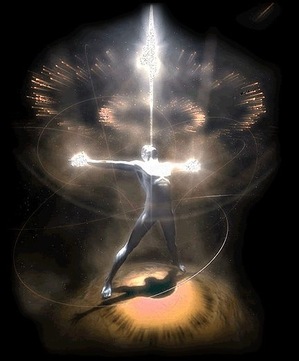 I've written on this subject before, but this is a powerful and potent time for rebirth and being reminded of the cycle of our lives - so, here's some thoughts on what's coming up for us all! Our asana practice can be really powerful, but ultimately we're just making shapes and biding our time if we don't dip a little deeper... how deep do you go? what can 'surrender' really mean to you? It's my conceit and a great dose of my teaching that the asana practice is simply mimetic of life, and practice for death. It's no mistake or accident that every tradition in the Yoga realm concludes in Savasana - the pose of the corpse - prior to 'rousing' and 'sealing', and then the new beginning. I would posit that Savasana is the most important, and yet most under-appreciated and under-utilized pose in the canon. How and why corpse pose? Because it mimics the trajectory of the life-cycle in the asana practice; we generally begin down on the ground, small, settled and contained, We build vigor, we rise to standing from which we grow into expansion, power, movement, experimentation, success and failure through the peak. The natural trajectory then begins to diminish and we move closer to the earth, into slower and more grounded movements and a more restorative contemplative experience. At the culmination of the practice, we release the body from asana and we release the breathing from the pranayama – release, let go, let dissipate, allow decomposition, letting it die. Sometimes, it almost appears that we’ve stopped breathing in the depth of savasana, as if we were being breathed from the external, rather from the energy of our musculature. This is release, union and absorption and dissipation. This is the metaphor for death. To let go in practice so when presented by the actual, we have an association to inform. 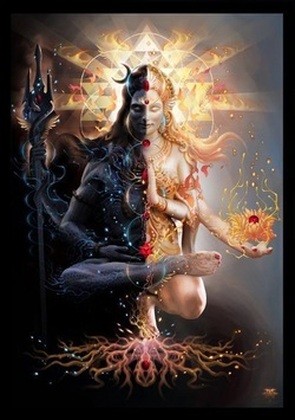 And why is Sava the corpse? Savasana – or ‘posture of the corpse' – is when the yogi lies on her or his back utterly relaxed in mind and body; all energies are abandoned and symbolically externalized in the figure of the Shakti dancing above this body. The essence or the implied intention here is that of being detached from our divine feminine side - Shakti - the yogi is incomplete and as good as dead. This belief is expressed in the aphorism: 'shivah shakti vihinah shavah' - or 'Shiva deprived of Shakti is Sava (a corpse).' Statements such as this recur in most of the Tantras in one form or another. Without the animating grace of the feminine to come into the male corpse, we wouldn’t have the form of Shiva… and, without the corpse that desires the animation, Shakti would have no lover. Body without spirit is corpse; spirit without body yearns for expression and union, like the lover. When we practice for death in the final pose of the asana practice, we invite the life-force to come and once again reanimate us into the dance of life… dance every day, until Shakti leaves Shiva and Sava is all that remains. Practice, all is coming. Release, for all is going. “Death must be so beautiful. To lie in the soft brown earth, with the grasses waving above one’s head, and listen to silence. To have no yesterday, and no tomorrow. To forget time, to forgive life, to be at peace.” Oscar Wilde I'll be teaching a special workshop around this theme coming up at Practice Yoga Austin, on Saturday the 4th of April. Check this sentence for a link to the event! Give thanks and praise, not dead yet!! 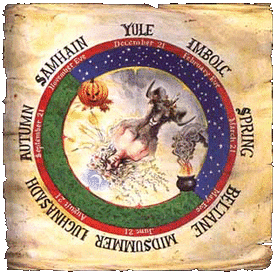 Today is a special day, not because of a Groundhog, although he has some twisted role in it! Today is Imbolc, or St. Brighid's Day - Imbolc is the name of the pagan festival celebrated on what was the first day of the Old Spring. Sometime centuries thereafter, it was appropriated and in Christian times it was transferred to Candlemas. This is a special time of the year; in addition to the four solar events of the Equinoxes and Solstices, most of the ancient cultures had an 'eight-spoke wheel of the year'. So, it was not unique to the Celts, from whom I draw inspiration and lineage, in seeing this time as a beginning of vernal stirrings. In the archaic Roman calendar, February was the last month of their calendar year- the name derives from februa, which means 'the means of purification or expiatory offerings.' February marked a turn of season bringing the renewal of agricultural activities after winter. This is how we've come to celebrate this day, the center point between the winter solstice and the vernal equinox in the northern hemisphere. The word itself, imbolc derives from the old Gaelic, i mbolg meaning 'in the belly' referring to the lambing season and the pregnancy of ewes. Imbolc was immediately followed by the Christian Candlemas; therefore, sometimes the names are used interchangeably. Imbolc is also called Saint Brighid’s Day, Lá Fhéile Bríde, Là Fhèill Brìghde or Laa’l Breeshey, all festivals honoring Brigid. Each of these represent the first promise of Spring, fertility and life, and are held at the place halfway between the Winter Solstice and the Spring Equinox; one of the eight-spokes of the year. 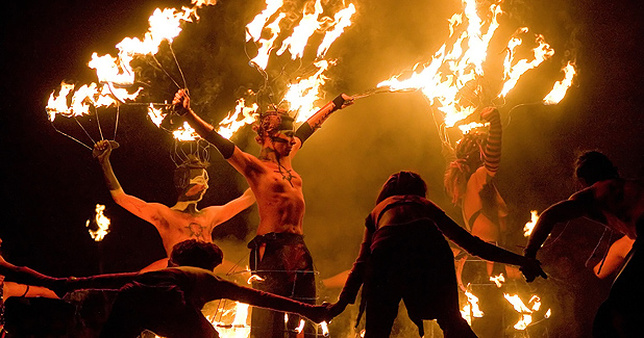 Historically, Imbolc was the feis or festival marking the beginning of Spring. During this time, large gatherings and great feasts were held. Imbolc was traditionally aligned with the start of the 'lactation of ewes and the beginning of lambing season'. Since the Northern Hemisphere is large and the range of Celtic culture broad, this could vary by as much as two weeks before or after the start of February. This holiday is a festival of the hearth and home; it stands as a celebration of the onset of the lengthening of days and the early promises of spring. That’s how it got associated with Groundhog’s Day and all of the trapping, although I believe it was originally a badger, but I digress… Celebrations often involved hearth-fires or bonfires, special treats made from dairy products, clairvoyance, scrying, divination or watching for omens, and the lighting of candles – hence Candlemas. These ideas of fire, of seeing and of burning all show that purification is an important part of the festival. The lighting of candles and fires represented the return of warmth and the increasing power of the Sun over the coming months, as well as the burning away of the old. So, celebrate - enjoy, light a candle or make a fire. Consider what should be left behind, and with intention, place that in the fire. Propitiate, make offering, give it up and enjoy your Imbolc!! Give thanks and praise!  Epiphany - in the early Christian traditions, yesterday was Epiphany... many meanings, and many observances crafted for it. Twelfth Night - the twelve days of Christmas, the legend says it took that long for the three Magi to make their way to see the nativity. And, through the machinations of the calendar from Julian to Gregorian, some folks still reckon the Christ-Mass on yesterday. Whatever the tradition, it signals the end of the journey, the culmination of the celebration and the 'awakening' or 'manifestation' - for after any journey, we are never arrived the same, but rather, quite changed. Some would say the dreamer awakens. I'm always more interested in the energetic symbolism, and how that manifests in our day to day. So, yes, this is a potent time. A time for consideration and reflection - and to wake up and make something happen. 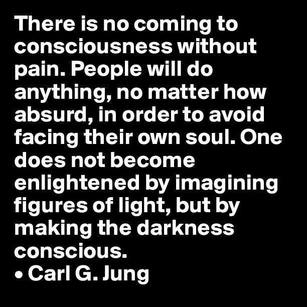 Too often we see ourselves getting into the drama, into the story - but not into the solution, not into the way out of the shit and towards the place where we can really make positive change. Not just for ourselves, but in and within ourselves. That will be the work. That's what I'm waking up to, that's where the energy of manifestation is going to - to not just repeating the story and the patterns and taking the spiritual bypass of 'everything happens for a reason' and 'this, too, shall pass', and the whole 'light and love' aspect... I'm gonna resolve to work on the 'this keeps happening because I keep creating the space for it' and 'this, too, shall I include, so I don't come back again', and 'shadow and shine, for darkness is the stage on which the light can dance'. Hope it works for you, I'm not right for all, nor am I all right, I'm just saying what I feel and know, and giving thanks and praise!  this is how I like to think about it - there is a sweet solar yearly cycle that happens which many cultures of many realms choose to celebrate; I like to relate the natural external cycles to our own natural internal cycles. solstice - solstice from the Latin 'to stand still' (sol = sun + sistire = stand still: think Sthira, for steadiness). indeed, for this period of the year, as the sun hits its lowest point on our axis tilt, the nights extend longer and longer, until they even seem 'to stand still'. here, we may not notice it as much, but the more North you go, the more dramatic it is. we've got these great solar holidays; they remain down through the ages and cultures and continue to frame and time many of our modern observances. it's cyclical, and it speaks to our energetics - personal and cultural. I liken the solar holidays (the major four occurrences; solstices and equinoxes) to the passing of a full cycle of breath for the planet. just as we move energetically through the cycles of our breathing, I believe that we collectively take an energetic, yearly, solar breath. when the Earth is moving from the Winter Solstice - Alban Arthan (the shortest and darkest day of the year) through the Spring Equinox - Alban Eilir and then arrives at the Summer Solstice - Alban Hefin (the longest and lightest day of the year), this is akin to the inhale. as the year then recedes back from that fullness through the dwindling, we come to the Fall Equinox - Alban Elfed and then back to the deepest of the dark - where we stand today, Winter Solstice - Alban Arthan: this is the depth of the exhale, completely empty.  starting from full recession and empty, and growing incrementally to complete presence and fullness, the Summer Solstice (standing still) acts as the momentary retention at fullness. in complement, the fullness then drawing inward, receding and rooting, grounding and stilling, the Winter Solstice (standing steady) acts as the suspension at the very base of the exhale. after three of these days, the orbit of the sun will begin to lengthen again in this hemisphere, the nights will grow shorter and shorter. this is the beginning of the inhale process; the energetic is quite different, although the change predicating the shift is incremental and subtle. using this metaphor and then creating ritual and observance has been instructive for me - in order to understand the seasonal shifts and changes, in order to create synergy between myself as living being and cosmos as living entity, and in order to mark time and create celebrations. enjoy, even though we are at the most inward and self-reflective of the energies, what lies before is is the swelling of our greatest potential and most exquisite fullness in those coming days. discern, reflect and consider, and then engage in the process of making your life and your experience better, more present and in service to more than your self. this is a Holy Day, so bring devotion to your motion and move like you mean it!! and, give thanks and praise!!  Rain, rain, rain; it’s been raining every couple of days for days... Some rumbling rain, dripping wet coming in freshets and then other times just hanging-in-the-air rain; but I’m not going to complain. give us our brief rainy season, we take it and drink deeply and greedily. I love it – feels real, and it feels... to me, rain is one of the most sensual of the 'weathers', if I can call them such. how often do you get to feel the subtle unspoken energy of sky, to see the lightning and to literally feel the thunder as it crashes; and to feel the changing nature of each drop, from most insistent to least detectable? rain is a sweet teacher; she comes when she is needed, even if not wanted. she makes things clean, and afterwards leaves even more clarity in her wake. she provides threshold – deep difference between what was and what will be, and creates presence by demanding our full attention in her tricks and wiles. and, she is the linking, the union, and the yuj between that which is material, and that which is ethereal. Mother Earth, open and accepting; Father sky, vast and expressive – and the rain joins the two in a sweet embrace, a dance of energy, and a cleansing of that which will no longer serve, and the nourishment and nurturing of new potentiality. and in this dwindling daylight season, the lengthening of night and the drawing of the chill, we tend to draw in any way; to the hearth, to the home, to the beloved ones, to our friends. in the glow of that fire, as we stave off the chill and the wet, we can dream of the days to come, and see what these seasons bring. so, let it rain… and give thanks and praise. 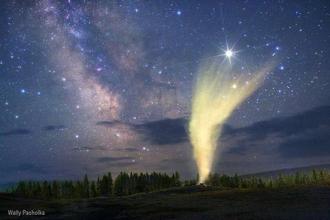 No matter how we find ourselves: in confrontation, in the moment, when we are really feeling it - we have just one of two choices. and, more often than not, without even recognizing it, we’re making one or the other in every moment… I suggest that we can expand into love, into the challenge, into the opportunity, into the grace and limitlessness. or, we can contract into fear, into isolation, into hatred, into the separation and the other, into the limit. it is the trajectory of our lives and our birthright to grow, to expand, to define and refine; often the choices we make create ripples we may never even be aware of. at the best of times, we are at our best, our highest self; at the worst, often we struggle to rise above our simple base nature. this is the challenge, this is the moment to own. our practices, our observances, our processes - and our friends... if we allow ourselves to receive it, there is wisdom, surrender and supplication. these show us that the soft always overcomes the hard – the roundest drop of softest water will wear away the toughest block of granite, given its three warriors: time, patience and perseverance. when we harden, when we stiffen and draw back, we feel the contraction and become defensive, closed, guarded… then, can we recognize this and move ourselves outward into connectivity, empathy, compassion, consideration or simply acceptance of what is? 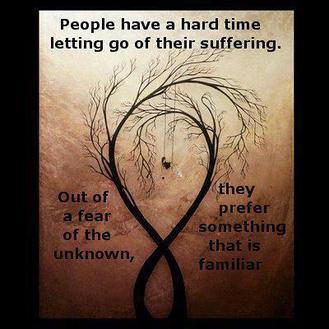 perhaps this is the greatest yoga we can challenge ourselves with – I suggest it is not a 30-day handstand challenge, not a 'stopdropandyoga', not an instagram and how many hits or followers or likes... maybe not astavakrasana, not a 90-day meditation, but rather, to love – fully, in the face of hate, in the times where it seems impossible, ‘til it hurts, when it’s all you got and even when it feels gone – love is limitless, you can always create more from the prana in the next breath. so, friends I beseech ye – here is your continued mission. be nice, nicer than is reasonable, with love and care and compassion. not for your loved one, not your friends, but the person you work with you like least (why?) and the person who you meet next that pushes those buttons – love them for being your Teacher. expand into love and then, give thanks and praise  When I have lost my faith, my patience, my tolerance and my compassion for any one of my fellow human beings; when I have no love for any one, singular person, I must choose to remember: to remember that humanity, human beings, our collective experience is wondrous, capable of incredible creation and imagination - the source of languages, arts, crafts, sciences, philosophies, cultures, artifacts, heritage and all I have been shown, given, shared with or pleasured by in life. there is a beauty in our collectiveness - in our non-cooperative cooperation. there is beauty in our feats and failures, efforts and excesses. there is hope, there is reason, there are literally billions of examples of the human condition. I need to find that grace in myself and in each person.  When I have lost my faith, my patience, my tolerance and my compassion for all of my fellow human beings; when I have no love for all humanity, I must choose to remember: to remember that individuals, human beings, unique and noble personalities, independent spirits, single drops in our ocean are the source of interpersonal love, friendships, mentors, teachers, companions, inspirations and are capable of creating change, ease, peace and comfort. there is a beauty in our own individuation - we are never so different as we are similar. we should feel that, we should get that, we should know that being one drop in the ocean both includes being the drop, yet being in the ocean. we cannot be ourselves without each other. maybe this speaks to you - maybe not... I needed to write it, hear it in my head, see it and put it out there for my accountability. you are appreciated for being part of my process. thanks and praise! |
Chrispy - Bhagat SinghRandom thoughts I've had, while teaching, about the teachings, about my teaching, and while talking about teaching. Connect with me:
|